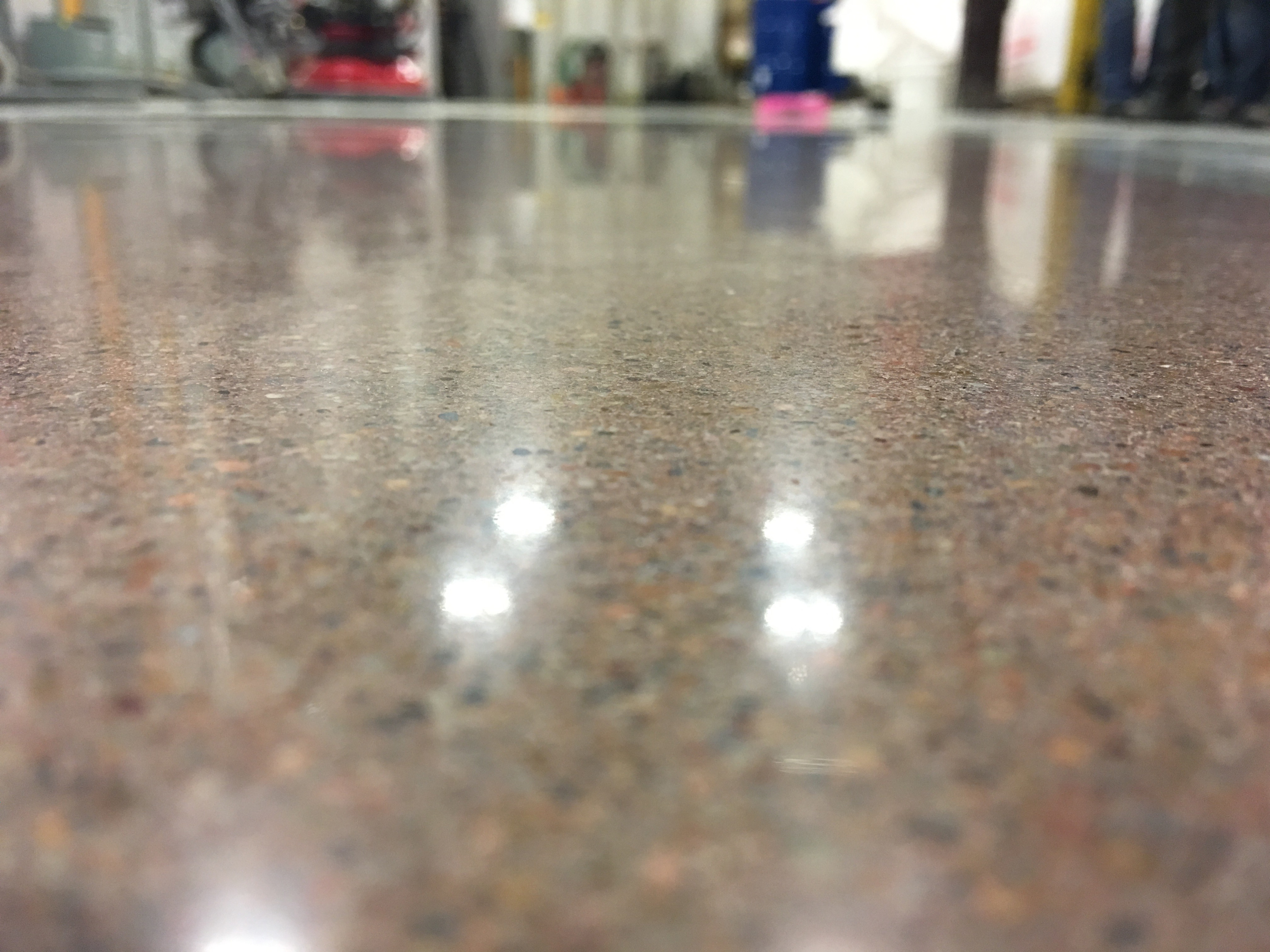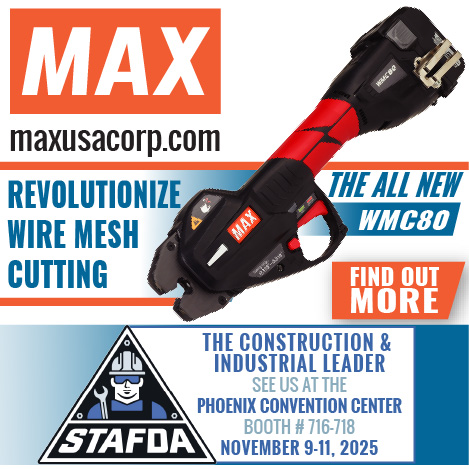Case Studies: Filling the need for fast turn-around, durable concrete control joints
With quick return to service, ability to withstand years of foot, cart or forklift traffic, polyurea meets the requirements of many industries.
From warehouses to retail showcases to grocery stores and beyond, polyurea is outperforming traditional epoxy, silicone, and polyurethane materials to fill and seal concrete slab control joints.
As we know, control joints – also called contraction joints by the American Concrete Institute – are basically planned gaps that allow a crack to occur at a weakened area and helps avoid random cracking.
Concrete joints and their filler material endure many stresses during the slab curing period and service life including continued shrinkage, traffic loads, and thermal cycling. In these slabs, the saw-cut control joint edges require protection to avoid serious spalling and deterioration where traditional materials are not always up to the task.
“Silicones and polyurethanes make good control joint sealants, but take at least 24 to 48 hours to fully cure and do not have the Shore hardness to be reliable joint fillers,” says Gary Gutierrez, owner of American River Caulking Inc., a California-based sealant, caulking, waterproofing and membrane system contractor.
“Epoxies have the Shore hardness to be joint fillers and can cure in 4 to 8 hours, but are not flexible or adhesive,” adds Gutierrez. “They typically crack on both sides of the concrete, disbond prematurely, and lack aesthetics so have to be replaced.”
Instead, a growing number of contractors have long since turned to polyurea as a superior control joint filler and sealant.
Performance Formulated Polyurea
“For new construction, remodels, or remediation, we have found that polyureas protect concrete control joints better than epoxies, silicones, and urethanes,” says Gutierrez. “Because polyureas like VersaFlex’s also cure so quickly, we can fill the joints during a lunch hour, and the concrete slab can be returned to service that afternoon. This helps with accelerated building timelines, where after the floor is done, you have racking, fork lifts and trucks coming in right after you.”
VersaFlex is a manufacturer of performance formulated polyurea joint filler and sealant for a variety of U.S. industrial, commercial, and public markets. To meet the requirements of a variety of industries, the company provides Polyurea systems, which are typically hand pumped or dispensed, in a range of formulations – including hard wheel traffic compliant and IACSC-IARW compliant for cold storage use. The polyurea, which starts to set in about 90 seconds and is tack free in about 10 minutes, can be shaved flush with the floor and returned to service quickly.
“We have found that the Shore hardness of the polyurea holds up really well to heavy foot, cart, and forklift traffic,” says Gutierrez.
According to Gutierrez, the polyurea’s ability to set and cure quickly not only optimizes end user timelines, but also contractor productivity along with their ability to take on additional jobs.
“Applying epoxy usually takes two applications, which would require my work crew to return the next day after curing,” says Gutierrez. “This would tie up my crew and involve paying for a hotel and extra meals on distant jobs. With rapid-curing polyurea, however, my crew can finish an application sooner. This allows them to work much more efficiently and take on more jobs.”
While most of Gutierrez’s polyurea joint filling jobs are for indoor concrete slabs in controlled environments, he is proud of the work American River Caulking has done on public access sidewalks in front of California’s state capital building.
“The sidewalks are fully exposed to outdoor thermal cycling and get so much tourist foot traffic that no other joint filler was working,” says Gutierrez. “So we applied SL/45 polyurea joint filler from VersaFlex, which is designed for slab movement and thermal cycling, and the sidewalk control joints are still in good shape about five years later.”
Warehouse, Freezer, and Showroom
Contractors and end users are turning to performance formulated polyurea for a wide range of specialized applications today.
“For high-traffic warehouses and loading docks, forklift wheels and forks can hit the concrete slab control joints all too often, causing big spalls,” says Sid Arthur, owner of Sid’s Sealants, a Fredonia, Wisconsin-based joint filling, caulking, and spray foam contractor. “We use SL/88 polyurea from VersaFlex. This provides additional protection from heavy, hard wheel dollies and fork lift traffic, which can cause joint edges to shoulder and spall.”
Sid’s Sealants has successfully used a similar polyurea formulation in freezers and cold storage as well.
“I had a freezer project where the customer specified epoxy joint filler, not realizing that it could take the epoxy weeks to cure due to the low temperature,” says Arthur. “We recommended and our customer chose SL/85 polyurea. This cures from -40° F to 130° F, can be returned to service in an hour, and is USDA/FSIS/CSA approved, so we turned over their project a day or two early.”
The performance formulated polyurea has also been used in grocery stores, retail showrooms, big box stores, and other venues, including polished concrete and decorative concrete applications.
“While typical polyureas have a limited color palette, the performance formulated polyurea has 68 standard colors and hundreds of custom colors,” says Arthur.
According to Arthur, Sid’s Sealants has often taken advantage of the performance formulated polyurea’s expanded color palette.
“In grocery stores and retail showrooms, we are often asked to accent the control joint with colors or patterns that complement the floor stain,” says Arthur. “I sometimes match the polyurea color with chunks of concrete that customers sent me as samples.”
In warehouses with specific staging areas for truck loading, Arthur has also inset some polyurea colors as line striping for safety or product staging.
“Since paint on the floor surface can be worn off by items dragged across it, some warehouse customers request polyurea inset line striping that is flush with the floor to permanently mark off certain areas,” says Arthur.
When concrete control joint cracks or spalls are too large to be repaired with polyurea joint filler alone, Sid’s Sealants relies on a related product called Quick Mender. This concrete repair system by VersaFlex has a low viscosity and completely sets in about ten minutes at 70°F.
Quick Mender can be used to fill holes, spalls, and popouts, and to repair the broken shoulders of control and construction joints. It essentially “welds the concrete” by adhering to the concrete matrix, and filling the capillaries within the concrete. To increase strength, aggregate or concrete dust can be added to the quick mender slurry. This mix can match the color of almost any concrete slab.
Arthur appreciates that the performance formulated polyurea products he uses are manufactured under ISO 9001-2008 quality control standards.
“When the polyurea is manufactured to such standards, I know that whatever crew I send out, the material will be consistent across jobs and applications,” concludes Arthur.
By Del Williams. For more info, call 800-321-0906 toll free; Fax 913-321-9007; visit www.versaflex.com. VersaFlex Inc., 686 South Adams St., Kansas City, KS 66105.
















